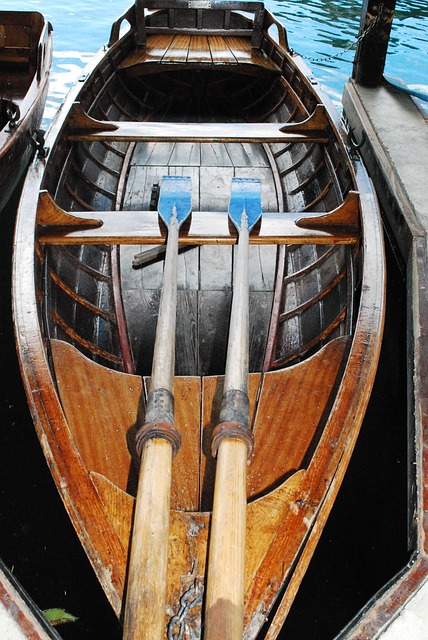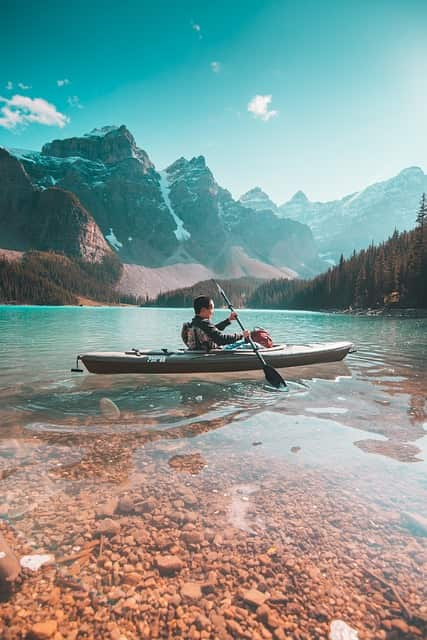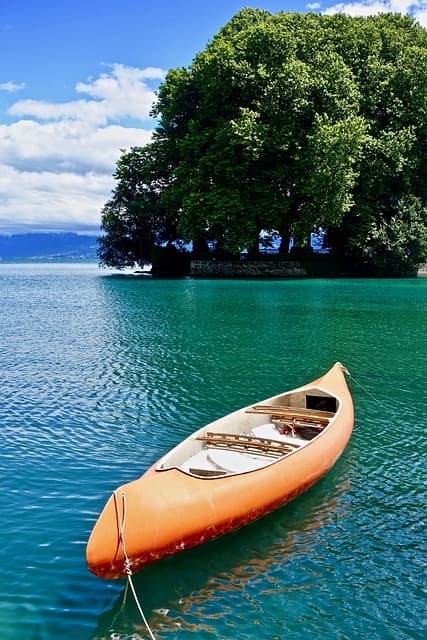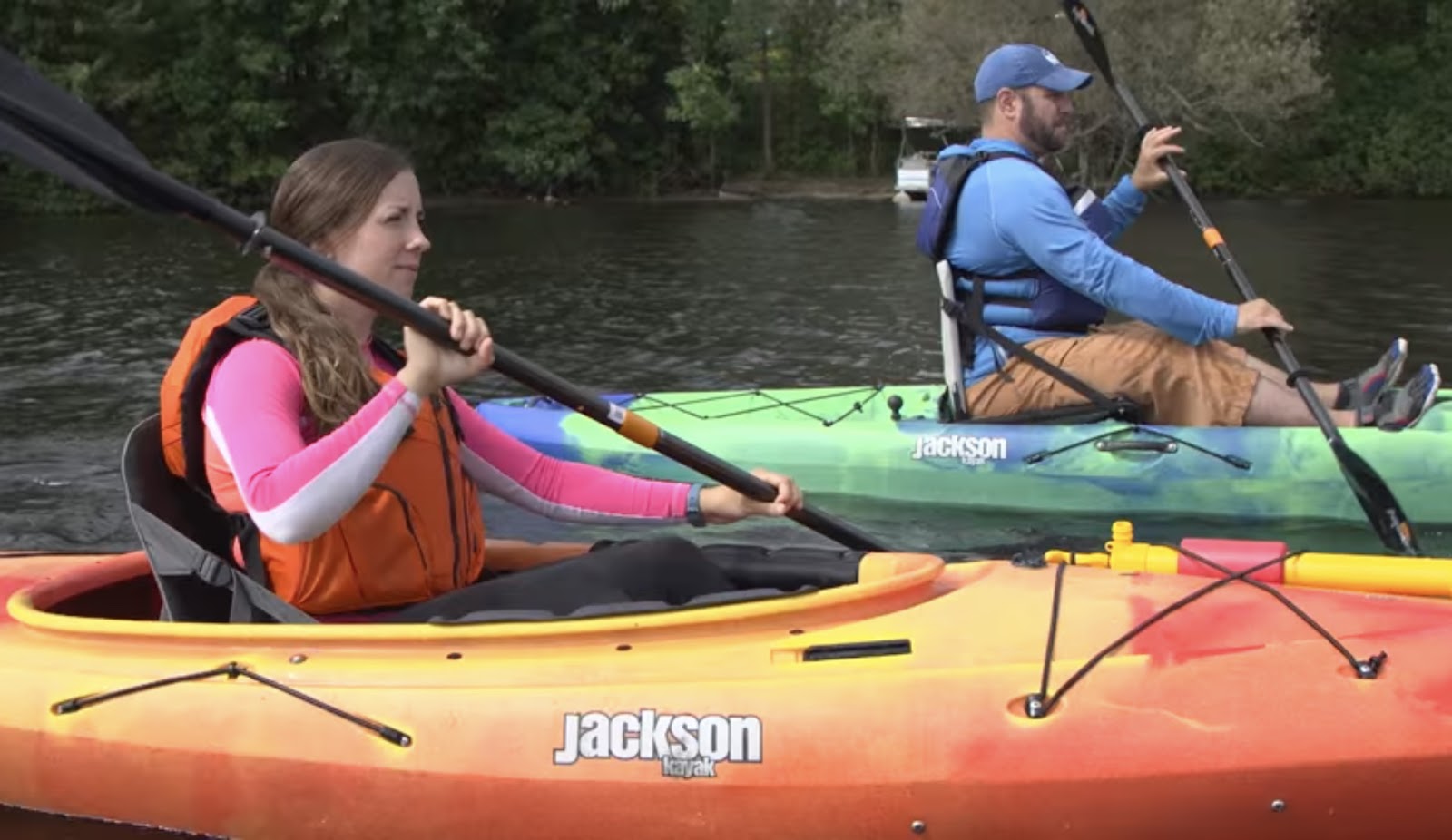In the realm of Iowa’s boating regulations and laws, a curious narrative unfolds as the governing bodies stray from conventional state practices to require the registration of canoes and kayaks exceeding 13 feet. Within this narrative, the waters of Iowa’s regulatory landscape become more intricate, painting a picture of a unique approach that sets this state apart from its peers.
As the sun casts its golden hues upon the rivers and lakes, a question emerges: why this departure from the norm? It’s a question that prompts a closer examination, inviting paddlers and enthusiasts to delve into the motivations and implications of this deviation.
Perhaps it is an endeavor to create a more comprehensive system, one that ensures accountability and enhances safety across all vessels that grace these waters. Or maybe it’s a nod to the diverse nature of Iowa’s waterways, recognizing that canoes and kayaks, regardless of size, play a vital role in the state’s aquatic ecosystem. Whatever the rationale, this divergence from tradition adds a layer of complexity to the narrative of boating regulations, inviting contemplation and curiosity.
In the backdrop of this divergence, a new dimension of responsibility takes shape. Canoe and kayak owners find themselves navigating the waters not only with paddles in hand but also with a sense of compliance and adherence to regulations. As the sun sets on another day of exploration, the ripples of this unique narrative continue to spread, creating a mosaic of regulations that blend seamlessly with the fluidity of Iowa’s waterways.
Registration Mandate for Canoes and Kayaks
Contrary to the norms observed in many states, the regulatory bodies responsible for Iowa’s waterways have veered off the beaten path, instituting a requirement for the registration of canoes and kayaks measuring over 13 feet in length.
Life Jackets and Audible Signals
Compellingly, Iowa’s statutes demand that every canoe and kayak be equipped with not only a life jacket for each occupant but also an audible sound-producing device, such as a whistle, ensuring safety in the event of emergencies.
Gratitude for Positive Legislation
Amidst these perplexing regulations, the state of Iowa does shine with commendable laws that should be celebrated by canoeists, kayakers, sailors, and recreational motorboat operators alike.
Overview of Iowa’s Canoeing and Kayaking Laws
Guardians of Waterways
Within the state’s borders, the vigilant enforcers of boating laws and regulations are none other than the Iowa Department of Natural Resources. State Police officers, alongside game and fish Wardens, share the responsibility of overseeing the intricate tapestry of canoe, kayak, and boating regulations.
Registration Criteria for Canoes
For those who navigate unpowered vessels propelled by human strength, the need for registration remains absent if the craft measures less than 13 feet in length.
The Question of Titles
Delightfully, Iowa offers reprieve when it comes to titling requirements. Canoes and kayaks, whether motorized or not, under the 17-foot length threshold need not be titled.
Licensing and Requirements for Canoe and Kayak Operators
Defying Age and Certification
Interestingly, the operation of non-powered canoes and kayaks demands neither certification nor specialized education. One can skillfully navigate these vessels without formal training.
Age and Boating Education
Intriguingly, individuals aged 12 to 17 must secure a boating safety card to command any motorized vessel with an engine exceeding 10 hp. While those beyond 18 years are not obligated to possess such certification, the wisdom of undergoing the course remains undeniable.
Safeguarding Waterways and Responsible Operation
Consequences of Intoxication
A decisive prohibition arises concerning the operation of watercraft under the influence of alcohol or drugs. Violation of this law, with a blood alcohol content of 0.08% or higher, triggers charges of boating under the influence (BUI).
Equipped for Emergencies
Unsurprisingly, like many jurisdictions, Iowa necessitates the availability of wearable personal flotation devices for all occupants of a vessel. A white navigation light becomes indispensable during periods of low visibility, while certain emergency equipment like sound-producing devices and distress signals bear significance in specific scenarios.
Licensing and Registration for Canoes and Kayaks
- The threshold for registration echoes the previous decree, signaling that watercraft exceeding 13 feet or those powered by any type of motor require formal registration;
- Yet, a ray of leniency shines for those who bring their vessels from other states, where legal operation with valid registration prevails, allowing them to navigate Iowa’s waterways without registration for up to 60 days;
- Registration and Titling for Motorized Canoes. Interestingly, if a canoe boasts a motor and mandates registration, titling becomes a companion requirement.
Operator Requirements for Motorized and Non-Motorized Vessels
- Age and Electric Motors. Curiously, age ceases to be a factor for operating canoes or kayaks equipped with electric trolling motors. Competence outweighs age, while minors under 12 require adult supervision for motorboats exceeding 10 hp;
- Empowering the Youth. Youth aged 12 to 17 find themselves empowered to operate motorboats surpassing 10 hp, either under adult supervision or if they hold a valid boater safety certification.
Navigating Alcohol Regulations
Restrictions on Alcohol Consumption. The act of imbibing alcohol during canoeing in Iowa stands prohibited. Operating a watercraft with a blood alcohol content (BAC) of 0.08% or higher leads to legal repercussions. Moreover, impairment due to substances beyond alcohol can also attract charges if a field sobriety test is failed or actions indicate intoxication.
The Essence of Life Jackets
While regulations vary, donning a personal flotation device remains a steadfast practice, akin to habit. The law mandates readily accessible Type I, II, or III life jackets for all aboard canoes or kayaks.
Essential Gear Checklist
Traveling safely and within the confines of the law on Iowa’s waterways demands the following gear:
- Mandatory life jackets suitable for everyone on board;
- Optional throwable flotation devices;
- Recommended manual bailing device;
- Nighttime Visual Distress Signals (VDS) on federally controlled waters;
- Daytime VDS if venturing onto waterways after dark on federally controlled waters;
- No daytime VDS requirement for human-powered canoes and kayaks.
This revised narrative retains the essence of the original text while offering a fresh perspective, unique phrasings, and a restructured flow that aligns with 3rd person narration.
Guiding Lights for Unpowered Vessels
In the realm of unpowered vessels, a crucial necessity emerges: a luminous white lantern with sufficient brilliance to deter potential collisions. The mandate of these lights stretches from anchoring to any movement transpiring between sunset and sunrise.
Audible Signals: A Sonic Imperative
Within Iowa’s waterways, an official decree underscores the need for canoes and kayaks to possess a resounding sound-producing apparatus that resonates audibly across considerable distances. The requirement dismisses the adequacy of vocal outbursts, focusing instead on dedicated sound devices.
Flame Control Measures
Interestingly, the call for fire extinguishers doesn’t extend to canoes and kayaks, the rationale being inherently evident. In the unlikely event of fire, the intuitive solution of a splash of water or controlled capsize should suffice.
Crucial Equipment for Safety and Communication
Undoubtedly, a pivotal piece of equipment that transcends legal mandates is the emergency locator beacon. Regardless of the chosen paddling terrain, this equipment finds its place as an indispensable companion. An outstanding example hails from ACR, heralded as the pinnacle in the realm of Emergency Locator Beacons.
Adult Obligations and PFDs
- Guarding Lives Aboard Vessels. In the narrative of adult obligations, the essence of personal flotation devices (PFDs) comes to the fore. Aboard canoes or kayaks of any dimensions, the presence of a US Coast Guard-approved Type I, II, or III PFD for every individual aboard is imperative;
- Youth and PFDs: A Key Distinction. However, the story changes for individuals under the age of 13. The Iowa waters decree that these youngsters must don the approved PFD, adorning their forms while the vessel maneuvers through the water;
- Exemptions and Exclusions. A touch of nuance enters the narrative as certain watercraft receive exemptions from the PFD regulations. Racing canoes, racing kayaks, rowing sculls, and other wind or paddle-powered racing vessels are granted a reprieve from these mandates.
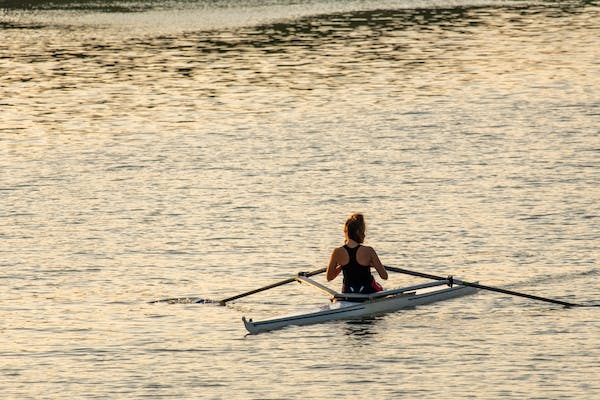
The Echoes of Sound Devices
Within the parameters of Iowa’s boat laws, a unified refrain emerges: each watercraft must possess a mechanism that can produce a deafening sound.
- Requirements for Auditory Vigilance. Iowa demands that all vessels, propelled or unpowered, must carry a resounding sound device capable of projecting a sustained blast for 4-6 seconds, audible for at least a mile. The inconspicuous human voice fails to meet this criterion;
- Choosing the Right Sonic Tool. Embracing practicality, the FOX 40 whistle takes its rightful place as a popular choice, meeting the state’s requirements for a functional sound device. Venturing into audacious alternatives, the Hyper-Whistle flaunts superior decibels and range, redefining sonic vigilance.
Illuminating Safety
Steering through the veil of night, Iowa’s waterways stipulate the need for unpowered canoes and kayaks to bear at the very least a radiant white lantern. The light’s luminosity must span all angles, positioning itself to thwart impending collisions.
Compulsory lights illuminate the distinction between designated mooring areas and all other sites of anchorage. Meanwhile, a nod from the state encourages the display of bow red/green lights during nighttime voyages, enhancing safety on uncharted waters.
Reimagining Distress Signaling
Visual Distress Signals: A Federal Obligation*
Taking a leap onto federally-controlled waters, the obligation of visual distress signals comes into play. An interesting jurisdictional divide occurs as Iowa’s waters, in isolation, release vessels from this requirement.
In Conclusion
In the canvas of Iowa’s waterways, the symbiosis of safety equipment and regulations weaves an intricate tapestry. As paddlers traverse these aqueous realms, the adherence to regulations, the embrace of prudent choices, and the partnership with equipment remain pivotal, ensuring both legality and safeguarding in equal measure.
- Amidst the gentle ebb and flow of Iowa’s rivers and lakes, a harmony of safety regulations and essential equipment comes to life. The watercraft, each a vessel of dreams and aspirations, becomes a conduit for both exploration and responsibility. These waterways are not just conduits of adventure but also corridors of commitment. Each canoe and kayak that graces the currents is a testament to the paddler’s promise to respect the law and to guard their own well-being;
- As the sun dips below the horizon and the waters shimmer with the reflections of the starlit sky, the importance of these regulations becomes illuminated. The bright lanterns and audible devices, the buoyant life jackets, and the emergency beacons all interlace to form a safety net that cradles adventurers as they traverse the water’s embrace.
In this intricate dance between human endeavor and natural elements, it is the adherence to these regulations that ensures not only the legality of the journey but also the tranquility of the soul. The paddle strokes may vary, the routes may meander, but the commitment to safety and adherence to regulations remain as constant as the flowing waters themselves. So, as the journey unfolds, let the ripples of compliance and preparedness intertwine seamlessly with the rhythm of each stroke, creating a symphony of safe exploration upon the canvas of Iowa’s waterways.
